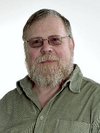
Active continental margins constitute one of Earth's most hazardous living environments due to the dangers posed by destructive earthquakes and volcanoes. Nevertheless, due to many factors, such as climate, resources and accessibility, these regions are often heavily populated. Thus it is of great importance to study the structures and processes which shape the plate boundary region associated with an active margin and, in particular, the seismically coupled part of the subduction zone where nearly all the earthquakes with magnitude greater than 8 occur. Although geophysical studies of many of Earth's subduction zones have been carried out there are still areas that are poorly studied. One such area is southern Chile where in 1960 the largest earthquake ever recorded instrumentally (Mw = 9.5) occurred. A knowledge of the structures and processes which shape the subduction zone in south Chile will lead to a better earthquake hazard assessment for the region. Building on the SPOC (Subduction Processes Off-shore Chile, see link) experiments completed in November 2001, the TIPTEQ active source, seismic experiment carried out in January 2005 aimed to provide a high-resolution structural image of the complete seismic coupling zone (thickness, sediment budget, subduction channel, fluids) down to more than 50 km depth in the nucleation region of the great 1960 Chile earthquake. From this image it is aimed to derive the petrophysical properties (including pore pressure and friction) and to identify the processes (e.g. stress evolution, compaction, lithification and dehydration) occurring in the vicinity of the coupling zone. The TIPTEQ active source, seismic experiment in January 2005 was cored by a 90 km long, E-W trending near-vertical incidence reflection (NVR) profile at 38°15´S from the coast to the longitudinal valley across the coastal cordillera. Shots were executed every 1.5 km and recordings were made using 3-component SENSOR PE-6/B 4.5 Hz geophones connected to Earth Data Loggers (EDLs) of the Geophysical Instrument Pool Potsdam (GIPP) and the Free University Berlin. With 180 such instruments at 100 m intervals along an 18 km long active spread, a nominal CDP (Common Depth Point) fold of 8 was achieved. With a daily roll along of 4.5 km the experiment took 18 days to complete. In addition, larger shots were executed also at greater offsets along the NVR profile to provide an Expanding Spread Profile (ESP) in the middle of the NVR profile and extra shots were also executed at selected shot-points along the NVR profile to generate SH-waves and thus produce a 1-fold SH image. See also link.
Time Frame
- January 2005
Funding
- BMBF - Federal Ministry of Education and Research
Principal Investigators
- M. Stiller (GFZ Potsdam)
- Dr. J. Mechie (GFZ Potsdam)
- Prof. Dr. C. Krawczyk (GFZ Potsdam)
- Prof. Dr. O. Oncken (GFZ Potsdam)
- Prof. Dr. S. Shapiro (Free University Berlin)
- Dr. S. Buske (Free University Berlin)
- Dr. P. Wigger (Free University Berlin)
Cooperations
- Universidad de Concepción, Chile, SEGMI, Chile
Methods & Equipment
- Near-vertical incidence reflection, expanding spread profiling, SH-wave generation with explosive sources – 180 EDL recorders and 180 3-component SENSOR PE-6/B 4.5 Hz geophones from GIPP and FU Berlin
Publications/Results
- Groß, K., Micksch, U. and TIPTEQ Research Group, Seismics Team, 2008. The reflection seismic survey of project TIPTEQ – the inventory of the Chilean subduction zone at 38.2° S. Geophys. J. Int., 172: 565-571, doi:10.1111/j.1365-246X.2007.03680.x.
- Ramos, C., Mechie, J. and Feng, M., 2016. Shear wave velocity and Poisson's ratio models across the southern Chile convergent margin at 38°15'S. Geophys. J. Int., 204: 1620-1635, doi:10.1093/gji/ggv541.
- Ramos, C., Mechie, J. and Stiller, M., 2018. Reflection seismic images and amplitude ratio modelling of the Chilean subduction zone at 38.25°S. Tectonophysics, 747-748, 115-127, doi:10.1016/j.tecto.2018.10.007.


